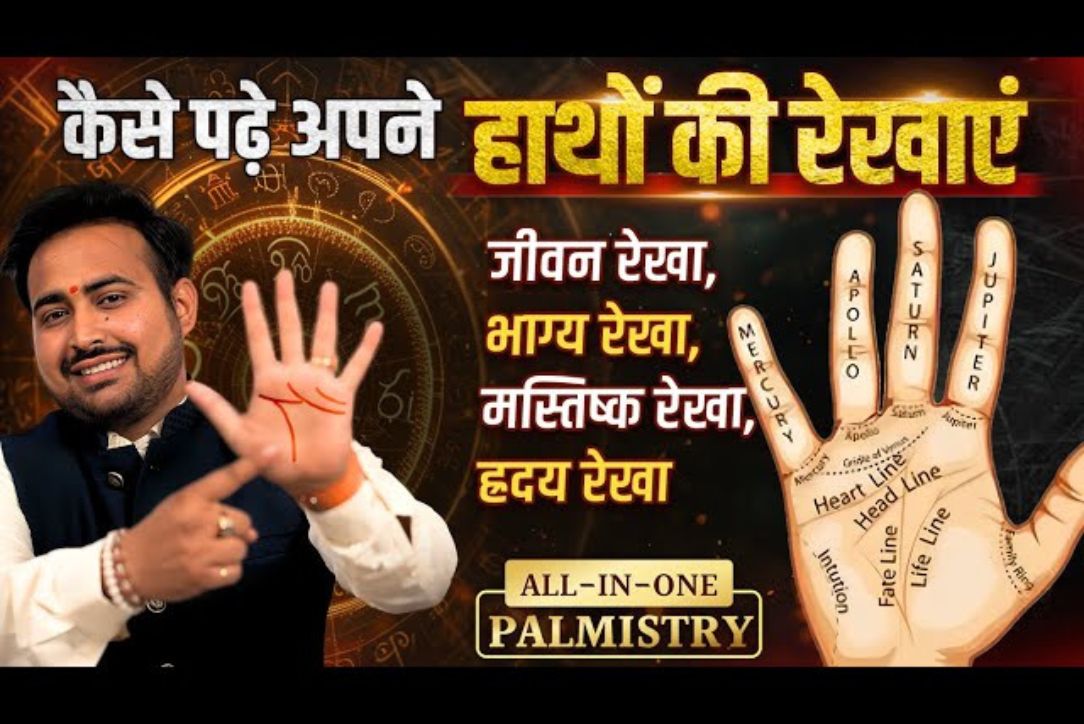Ever found yourself wondering what secrets lie in the lines of your palm? Or perhaps you’ve watched someone analyse hands and felt curious to uncover your own hidden traits? If so, you’re in the right place! Palmistry, the ancient art of palm reading, has captivated people across cultures for centuries. This intriguing practice involves examining the unique lines, shapes, and mounts on our hands to reveal personality traits and even provide glimpses into future possibilities. Known as one of the oldest forms of divination, palmistry has roots in ancient India, China, Egypt, and Greece, where it was regarded as a powerful tool for insight and guidance.
Palm reading, or palmistry, interprets the lines, mounts, and shapes of the hands to reveal insights into a person’s character, emotions, strengths, and life path. The lines on our palms — such as the life line, heart line, and head line — reflect aspects of health, love life, mindset, and key events. By studying our palms, we gain self-awareness that can guide decisions, reveal hidden talents, and even suggest future directions. While it doesn’t determine fate, palmistry reading serves as a tool to help us make choices aligned with our true nature.
Basics of Palm Reading

Palmistry is the art of reading the lines, mounts, and shapes of the hands to gain insights into personality, life path, and future. To begin, it’s important to understand the dominant and non-dominant hands, the mounts on palm, and the major and minor lines. Let’s explore these basic elements to unlock what your hands reveal.
A) Dominant vs. Non-Dominant Hand
The dominant hand (the one you write with) represents your active, outward self — career, relationships, and life experiences. The non-dominant hand reflects your inner traits, subconscious, and untapped potential. Together, both hands offer a fuller picture of your past, present, and future.
B) Different Areas of the Palm (Mounts)
The palm has “mounts,” raised areas linked to different qualities. For example, the Mount of Venus (beneath the thumb) shows love and vitality, while the Mount of Jupiter (below the index finger) reflects ambition and leadership. These mounts provide deeper insight into emotional and motivational drives.
C) Major and Minor Lines
The major lines are the life line, heart line, and head line. The life line reveals vitality and life path, the heart line reflects love and emotions, and the head line indicates intellect and mindset. Minor lines, like the fate and sun lines, add detail about career, relationships, and other life aspects. These lines together tell your life story.
Understand The Shape of The Hand
In palm reading, understanding hand shape is the first step in revealing fundamental personality traits and life tendencies. Hand shapes are generally categorized based on the four elements: Earth, Air, Water, and Fire. Look at both the shape of your palm and the length of your fingers.
The Four Hand Shapes and Their Meanings
1. Earth Hands
- Features: Square palm, short fingers; often broad with thick or coarse skin.
- Traits: Practical, grounded, reliable, and hard-working.
- Earth hands represent stability and a love for routine. People with Earth hands are often down-to-earth, prefer tangible results, and enjoy physical work. They may be strong-willed and dependable but sometimes resist change.
2. Air Hands
- Features: Square or rectangular palm, long fingers; typically, fingers have pronounced knuckles, and skin may be dry.
- Traits: Intellectual, communicative, curious, and analytical.
- Air hands indicate a person who values knowledge and is naturally curious. They’re great communicators, open-minded, and often creative thinkers. They may be prone to overthinking and can sometimes appear detached due to their analytical nature.
3. Water Hands
- Features: Long, rectangular palm with long fingers; soft, often flexible hands.
- Traits: Emotional, intuitive, creative, and empathetic.
- Water hands are associated with empathy, imagination, and strong emotional awareness. These individuals are often sensitive to others’ needs, adaptable, and tend to excel in creative fields. However, they may struggle with boundaries or stress if overly emotional.
4. Fire Hands
- Features: Square or rectangular palm, short fingers; often firm, with flushed or pink skin.
- Traits: Passionate, confident, spontaneous, and energetic.
- Fire hands reflect a dynamic personality, brimming with enthusiasm and often drawn to leadership. People with Fire hands are action-oriented, ambitious, and natural risk-takers. They may sometimes struggle with patience or need to learn moderation.
Consider the Balance Between Palm and Fingers
- Long fingers with short palms: Suggest detail-oriented, patient, and analytical qualities.
- Short fingers with long palms: Indicate a preference for action over analysis and quick decision-making.
Hand Flexibility
- Flexible hand: Indicates adaptability, openness, and a willingness to go with the flow.
- Stiff hand: Reflects determination, focus, and adherence to structure or tradition.
Identify The Major Lines
Palmistry focuses on the major lines of the hand, each reflecting key aspects of life. These lines provide insights into your health, emotions, intellect, and destiny. Let’s break down the major lines and their meanings:
- Life Line (Health, Vitality, and Life Path): The life line curves around the base of the thumb and sweeps down toward the wrist. It is commonly associated with health, vitality, and the overall trajectory of your life. A deep, long life line often indicates strength and a full life, while a short or shallow life line can suggest potential health challenges or a need for greater self-care.
- Heart Line (Emotions, Relationships, and Love): The Heart line curves along the top of the palm, under the fingers. It reflects your emotional nature, relationships, and capacity for love. A deep, clear heart line signifies emotional openness and strong connections, while a broken or faint line may suggest emotional challenges or difficulties in forming close bonds.
- Head Line (Mentality, Intelligence, and Decision-Making): The head line runs horizontally across the palm, typically starting near the life line. It represents your intellect, decision-making ability, and how you approach problems. A long, straight head line suggests a practical, focused mind, while a curved or short head line can point to creativity, intuition, or scattered thinking.
- Fate Line (Career, Destiny, and Life Events (if present)): The fate line, when present, runs vertically from the middle of the palm toward the base of the fingers. It represents your career path, destiny, and significant life events. A strong fate line indicates a clear direction or a life shaped by external influences, while a faint or absent fate line suggests more self-determined choices or a less predictable life path.
Examine The Minor Lines
Each minor line or symbol brings a different layer of meaning and can vary from person to person, adding depth to a palm reading. Consistently reading and practicing with multiple palms will enhance your interpretation skills over time.Here’s a deeper look into various minor lines and symbols that appear on the palm, each offering unique insights:
1. Sun Line (Apollo Line)
- Location: Runs vertically from the base of the palm towards the ring finger.
- Insights: Often linked to fame, success, creativity, and happiness.
- Deep and long: Indicates sustained success or recognition in life.
- Faint or broken: Suggests ups and downs or inconsistent recognition.
- Double Sun Line: May suggest talents in multiple fields or dual sources of happiness.
2. Mercury Line (Health or Intuition Line)
- Location: Typically runs from the base of the palm up toward the pinky finger, often parallel to the Fate Line.
- Insights: Associated with health, communication, intuition, and business skills.
- Clear and long: Represents strong intuition and success in communication or business.
- Broken or faint: May indicate challenges in health or communication.
- Multiple Mercury Lines: Points to strong business acumen or skills in multiple fields.
Read Related Blog - जानें, हाथों की लकीरों से कौन-सी बीमारियां हो सकती हैं?
3. Marriage Lines (Relationship Lines)
- Location: Horizontal lines on the edge of the palm, below the pinky.
- Insights: Often thought to reflect relationships, marriages, or significant partnerships.
- One clear, deep line: Indicates a strong, lasting relationship.
- Multiple lines: May suggest several significant relationships or partnerships.
- Downward sloping: Could indicate emotional challenges in relationships.
- Forked line: May represent separations or difficulties in partnerships.
Read Related Blog - हाथ की रेखाएं शादी वाली
4. Children Lines
- Location: Small, vertical lines on or near the Marriage Lines.
- Insights: Traditionally thought to represent children or a close bond with younger people.
- Clear and distinct: Often taken to mean a significant or strong connection with children.
- Weak or faint lines: Can indicate fewer or indirect associations with children.
5. Girdle of Venus
- Location: A curved line under the ring and middle fingers.
- Insights: Linked with sensitivity, empathy, and emotional depth.
- Clear and prominent: Reflects strong emotional depth and a passion for art or relationships.
- Broken: Could indicate fluctuating emotions or sensitivity to criticism.
6. Bracelets (Rascette Lines)
- Location: Horizontal lines on the wrist.
- Insights: Traditionally associated with physical health and overall life stability.
- Three clear bracelets: Symbolize a balanced and healthy life.
- Broken bracelets: May represent challenges or health issues.
7. Travel Lines
- Location: Horizontal lines near the edge of the palm, often below the Mercury Line.
- Insights: Represent journeys, relocations, or significant life changes.
- Long and straight: Could indicate significant or meaningful travel.
- Crossed by other lines: May suggest difficulties during travels or relocations.
8. Simian Line
- Location: Occurs when the Heart Line and Head Line merge into one single line.
- Insights: Linked to intense focus, passion, and sometimes emotional extremes.
- Clear, single line: Reflects intensity and determination.
- Broken or unclear: Might signify inner conflicts between logic and emotion.
Other Symbols
Symbols that occasionally appear on the palm add unique insights:
- Stars: Success, sudden fame, or a significant event.
- Squares: Protection or a period of stability; can act as a “safety net” around troubled lines.
- Crosses: Major life changes, challenges, or crossroads.
- Triangles: Strong talents or potential for growth, often beneficial.
- Islands: Challenges, delays, or interruptions; often seen as periods of struggle on specific lines.
Interpret the Mounts
In palm reading, the mounts are raised areas of the palm associated with different traits and aspects of one’s personality. Each mount is named after a planet, reflecting the qualities traditionally associated with that planet. Here’s a breakdown of the main mounts and how to interpret them:
1. Mount of Venus
- Location: At the base of the thumb, within the “ball” of the palm.
- Represents: Love, passion, vitality, and affection.
- Interpretation:
- High Mount: Warm-hearted, passionate, enjoys pleasure and romance, values close relationships.
- Low Mount: May be reserved or have a more pragmatic approach to relationships and physical pleasures.
- Flat or Underdeveloped: Could indicate a lack of interest in romance or difficulty expressing emotions.
2. Mount of Jupiter
- Location: At the base of the index finger.
- Represents: Ambition, confidence, leadership, and authority.
- Interpretation:
- High Mount: Strong sense of leadership, ambitious, self-confident, enjoys being in charge.
- Low Mount: More modest or shy, may prefer not to take center stage.
- Flat or Underdeveloped: Indicates less interest in power or ambition, may avoid taking initiative.
3. Mount of Saturn
- Location: At the base of the middle finger.
- Represents: Responsibility, discipline, and introspection.
- Interpretation:
- High Mount: Thoughtful, responsible, cautious, and introspective, often a realist.
- Low Mount: More carefree or light-hearted, may lack patience.
- Flat or Underdeveloped: Dislikes routine and may be less responsible or disciplined.
4. Mount of Apollo (Sun)
- Location: At the base of the ring finger.
- Represents: Creativity, self-expression, happiness, and love for beauty.
- Interpretation:
- High Mount: Artistic, expressive, optimistic, loves beauty and the arts, often charismatic.
- Low Mount: May lack self-confidence or have little interest in artistic expression.
- Flat or Underdeveloped: Could indicate a practical, less creative personality.
5. Mount of Mercury
- Location: At the base of the pinky finger.
- Represents: Communication, intellect, and business acumen.
- Interpretation:
- High Mount: Strong communicator, persuasive, socially adept, often skilled in business.
- Low Mount: May struggle with communication or feel introverted.
- Flat or Underdeveloped: Less focused on intellectual or business pursuits.
6. Mount of Luna (Moon)
- Location: Along the outer edge of the palm, opposite the thumb, toward the wrist.
- Represents: Imagination, intuition, empathy, and the subconscious mind.
- Interpretation:
- High Mount: Strongly intuitive, imaginative, empathetic, enjoys creative pursuits.
- Low Mount: Practical, with a focus on facts and less interest in fantasy or imagination.
- Flat or Underdeveloped: May lack imagination or intuitive insight.
7. Mount of Mars
Mars has two distinct areas, representing different forms of strength and resilience.
- Upper Mars (next to the Mount of Mercury):
- Represents: Mental courage, resilience, and assertiveness.
- High Upper Mars: Mentally resilient, assertive, and able to defend oneself in tough situations.
- Low or Flat Upper Mars: May lack mental fortitude or assertiveness.
- Lower Mars (below the Mount of Jupiter, near the thumb):
- Represents: Physical strength, endurance, and bravery.
- High Lower Mars: Shows physical stamina, bravery, and assertiveness.
- Low or Flat Lower Mars: May lack physical energy or strength.
8. Interpreting Mount Combinations
The balance between these mounts can reveal a lot about a person’s character. For instance:
- High Venus and Luna mounts may indicate a highly imaginative, romantic personality.
- High Jupiter and Mars mounts might suggest a natural leader who is courageous and ambitious.
Conclusion
Palm reading offers a fascinating glimpse into our personality, strengths, and potential, combining ancient wisdom with an understanding of human nature. By examining the shape of the hand, analyzing the major and minor lines, and interpreting the mounts, we can uncover insights into character traits, emotional depth, and life paths. While palmistry doesn’t predict a fixed destiny, it serves as a valuable tool for self-reflection, helping individuals recognize qualities, make thoughtful choices, and follow a path aligned with their true nature. Palm reading invites a journey of discovery, showing that sometimes the answers we seek are in the palm of our hands.
Related Blogs:








